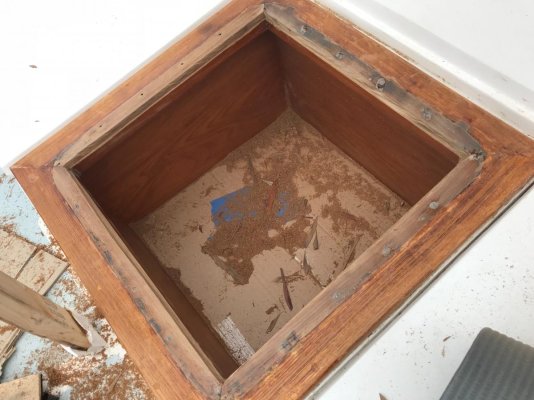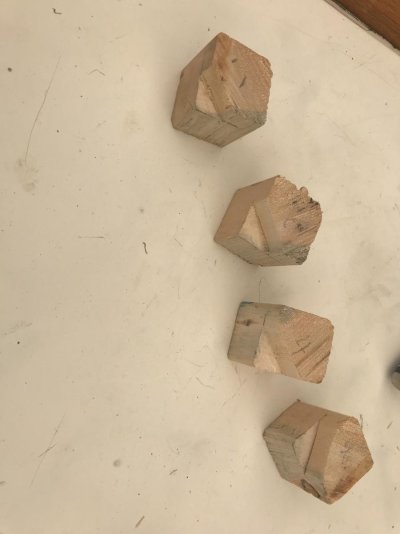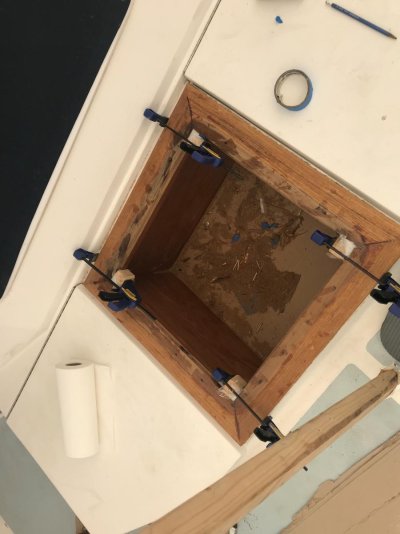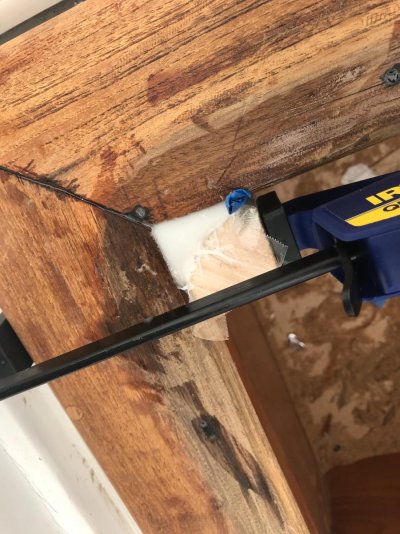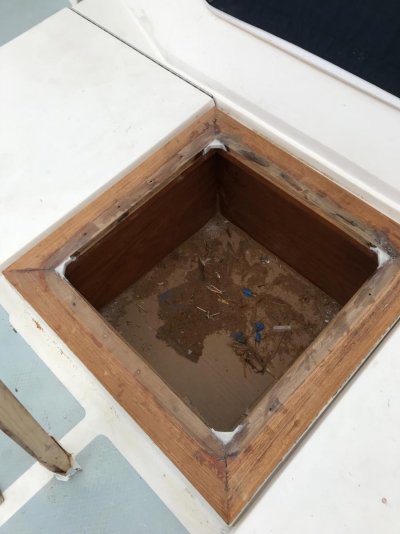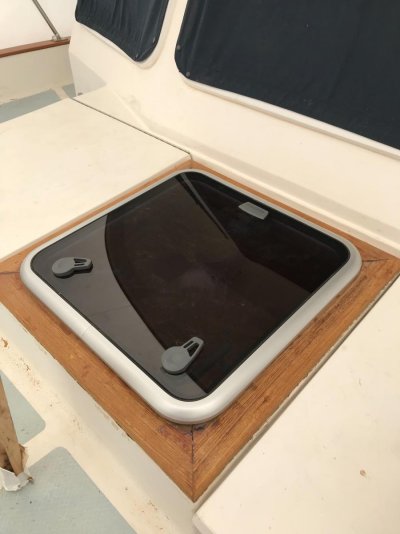angus99
Guru
I traced a persistent leak in our forward hatch area to a gap in a miter joint on the underlying wooden frame. After removing the hatch I have a few questions about the best way to proceed.
First, the source of the leak: I’d rather not remove the wooden frame since it extends down into the mouth of the opening and seems to be bedded soundly. I used a heat gun to get down to bare wood. How would you wood-working experts fill the gap in the miter joint? (I’ll probably redo all four miters while I can.) I’m thinking I’d rout the old caulk out and reacaulk or press in some butyl tape before finishing everything with CPES and Epifanes. Assuming this is a good fix, would you use something like a Fein multitool or knife to cut out the caulk—perhaps expanding the joint in the process?
Refurbishing the metal hatch: I assume it’s aluminum. Thought I’d have it powder coated and renew the gasket while it’s out. The finish (Maybe it’s anodized) on the hatch isn’t affected by the heat gun. Has anyone stripped off the old coating on an aluminum hatch and, if so, how? Thinking I’ll rebed the metal frame with butyl tape per CMS’s guidance.
Any thoughts much appreciated.
First, the source of the leak: I’d rather not remove the wooden frame since it extends down into the mouth of the opening and seems to be bedded soundly. I used a heat gun to get down to bare wood. How would you wood-working experts fill the gap in the miter joint? (I’ll probably redo all four miters while I can.) I’m thinking I’d rout the old caulk out and reacaulk or press in some butyl tape before finishing everything with CPES and Epifanes. Assuming this is a good fix, would you use something like a Fein multitool or knife to cut out the caulk—perhaps expanding the joint in the process?
Refurbishing the metal hatch: I assume it’s aluminum. Thought I’d have it powder coated and renew the gasket while it’s out. The finish (Maybe it’s anodized) on the hatch isn’t affected by the heat gun. Has anyone stripped off the old coating on an aluminum hatch and, if so, how? Thinking I’ll rebed the metal frame with butyl tape per CMS’s guidance.
Any thoughts much appreciated.

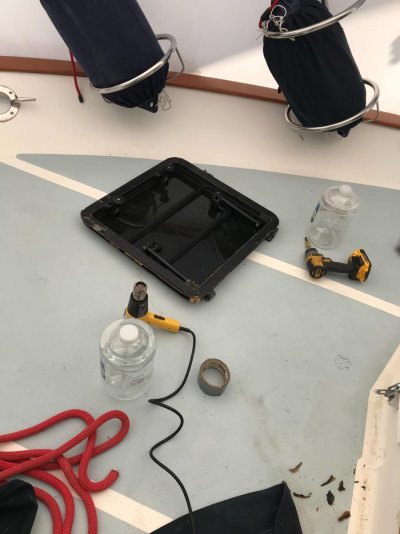
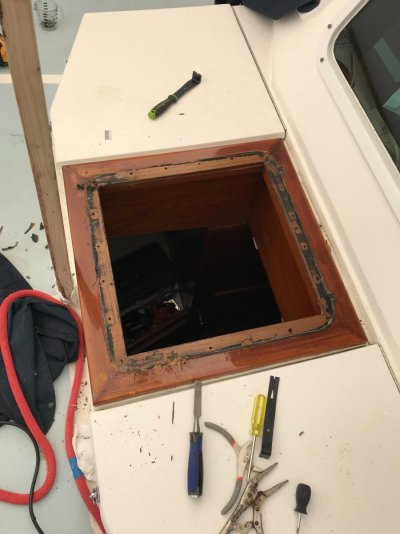
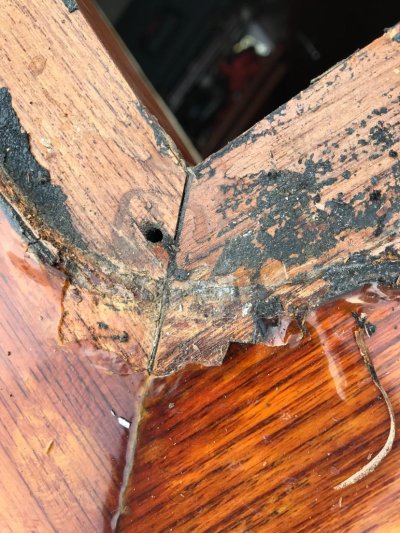
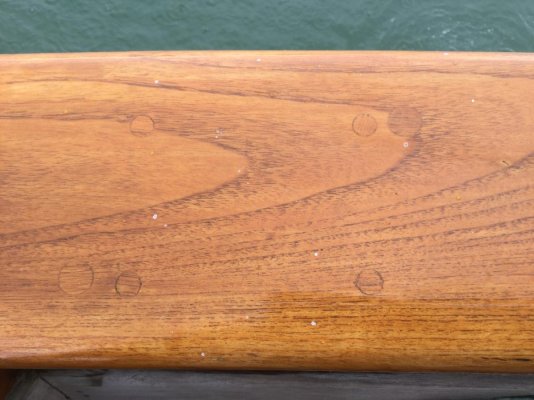
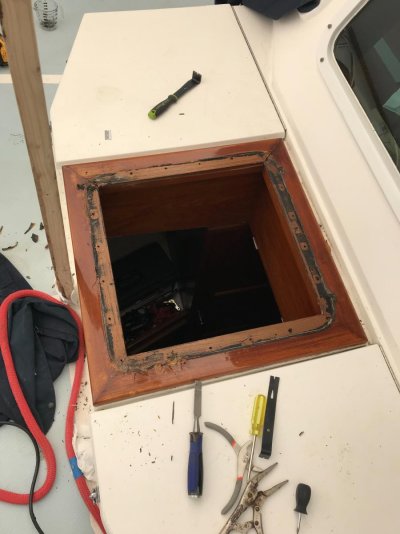
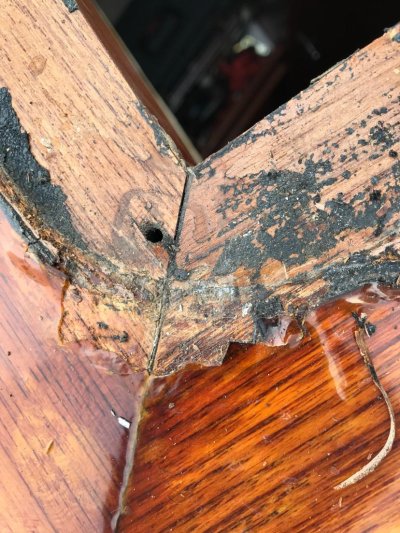
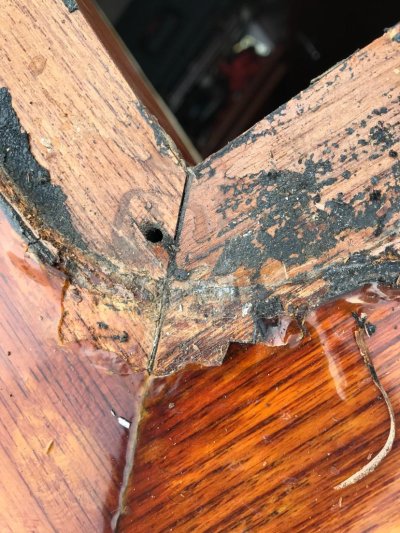
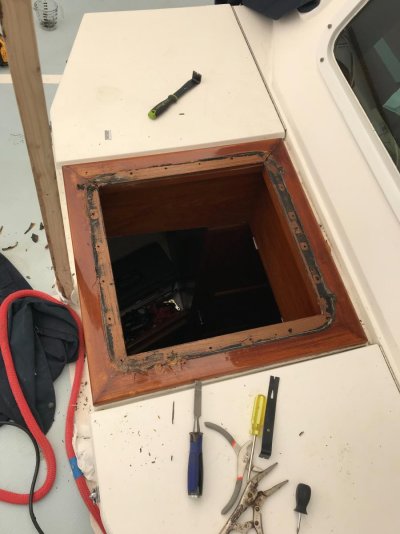
 . (Any real worker would have seen this at the outset.). In other words, there would be nothing under the hatch corners to support the bedding material and it would leak at all four corners.
. (Any real worker would have seen this at the outset.). In other words, there would be nothing under the hatch corners to support the bedding material and it would leak at all four corners.